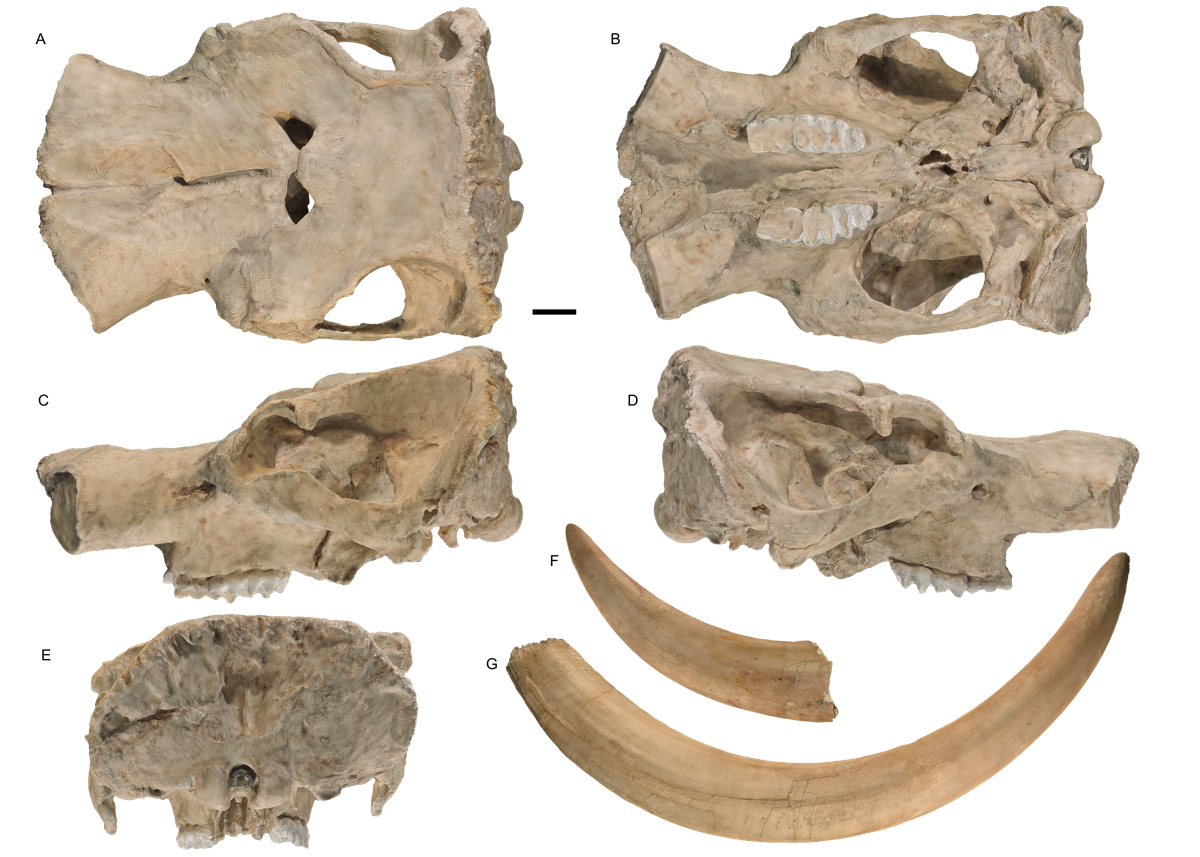 The big news this week for Western Science Center was the naming of a new species of mastodon, Mammut pacificus.For decades, the consensus on Pleistocene mastodons (which I shared) was that in North America there was only a single, widespread species, Mammut americanum. Four years ago, I stumbled across the fact that California mastodons have different tooth proportions than other mastodons. A group of us started exploring that issue, trying to determine what was going on. To that end, in 2016 we launched a crowdfunding campaign on experiment.com to allow us to gather mastodon measurements from other parts of the continent. Exploring this problem continued through the Valley of the Mastodons symposium in 2017. Sometime in late 2017, we started to consider the possibility that we were seeing these differences because we were dealing with two different species, and by mid-2018 we started working on a manuscript. It was finally published last Wednesday.So, what makes the Pacific mastodon different from the American mastodon? Here are the major characters:-- Mammut pacificus has narrower teeth than M. americanum, especially the 3rd molars. On the left below is a lower third molar from Max, and on the right is the same tooth from an American mastodon from Ohio (from the Cincinnati Museum of Natural History and Science).
The big news this week for Western Science Center was the naming of a new species of mastodon, Mammut pacificus.For decades, the consensus on Pleistocene mastodons (which I shared) was that in North America there was only a single, widespread species, Mammut americanum. Four years ago, I stumbled across the fact that California mastodons have different tooth proportions than other mastodons. A group of us started exploring that issue, trying to determine what was going on. To that end, in 2016 we launched a crowdfunding campaign on experiment.com to allow us to gather mastodon measurements from other parts of the continent. Exploring this problem continued through the Valley of the Mastodons symposium in 2017. Sometime in late 2017, we started to consider the possibility that we were seeing these differences because we were dealing with two different species, and by mid-2018 we started working on a manuscript. It was finally published last Wednesday.So, what makes the Pacific mastodon different from the American mastodon? Here are the major characters:-- Mammut pacificus has narrower teeth than M. americanum, especially the 3rd molars. On the left below is a lower third molar from Max, and on the right is the same tooth from an American mastodon from Ohio (from the Cincinnati Museum of Natural History and Science).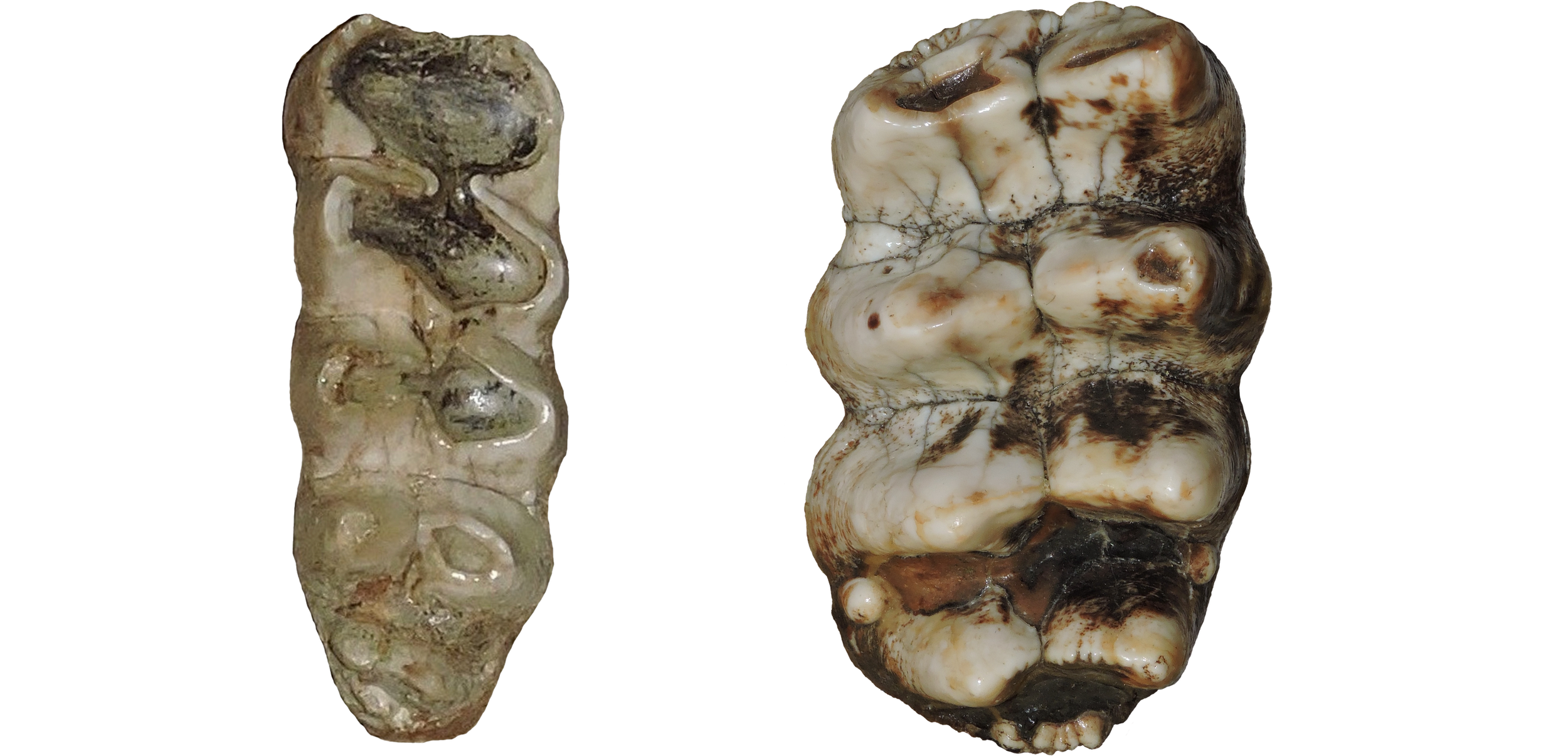 This trend is present in every tooth position except the upper 2nd molars, although we had the best statistical support for the 3rd molars.-- Mammut pacificus has six sacral vertebrae, while M. americanum usually has five. There has been one American mastodon reported with six sacrals, and another reported with four (although I have not personally seen either of these specimens), but all the other specimens for which we could get data (five of them) have five sacrals. All three known M. pacificus sacrals, including the one below from Diamond Valley Lake, have six.
This trend is present in every tooth position except the upper 2nd molars, although we had the best statistical support for the 3rd molars.-- Mammut pacificus has six sacral vertebrae, while M. americanum usually has five. There has been one American mastodon reported with six sacrals, and another reported with four (although I have not personally seen either of these specimens), but all the other specimens for which we could get data (five of them) have five sacrals. All three known M. pacificus sacrals, including the one below from Diamond Valley Lake, have six.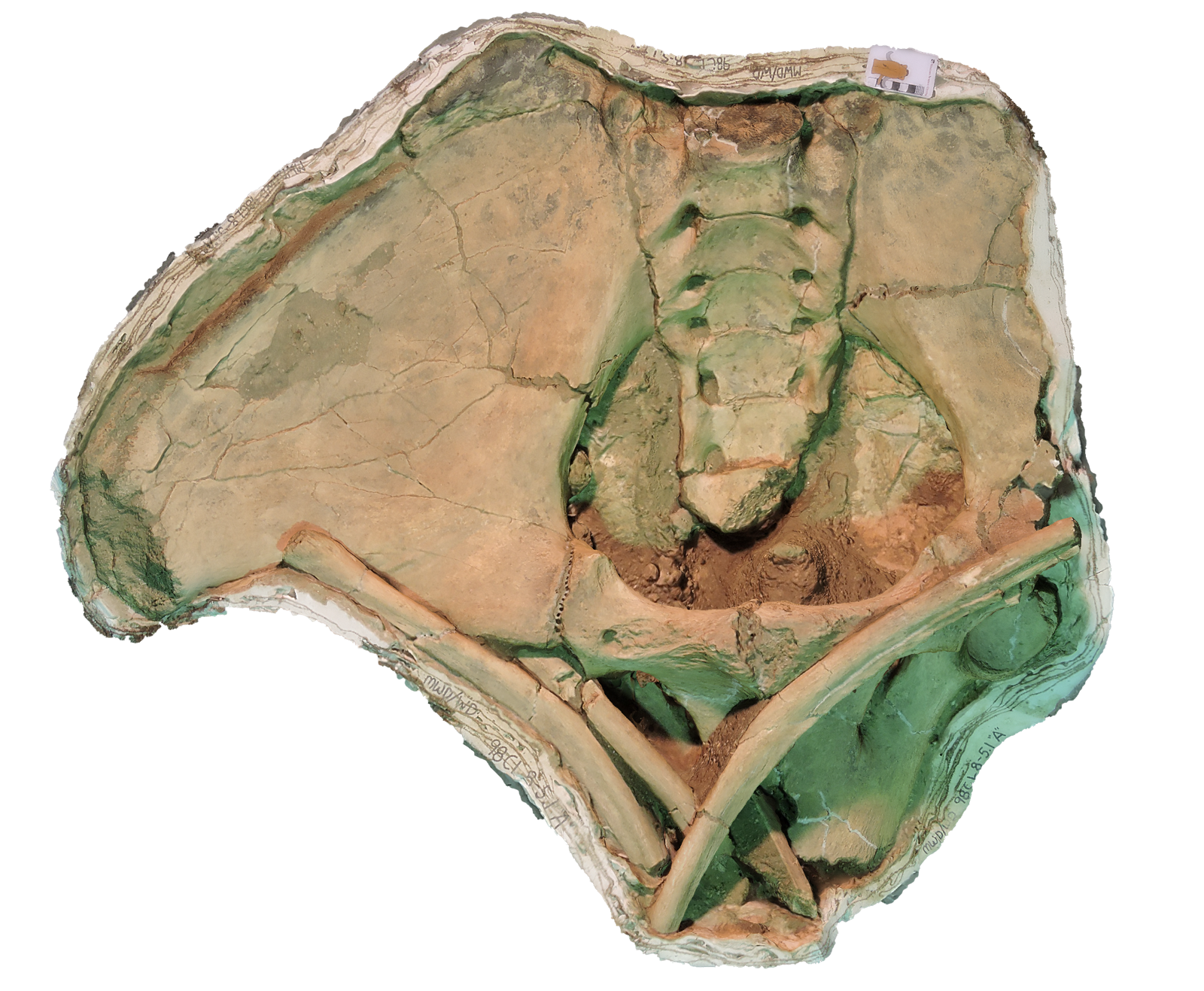 -- Mammut pacificus has a thicker femur for a given length. This is a feature we need to explore further, but our data is a bit limited. The trends we see suggest that not only do Pacific mastodons have thicker femora, but that the difference becomes more pronounced with larger body size. However, we don't have any really big M. pacificus femora to confirm this (Max's femur is incomplete). Below, "Little Stevie's" femur from DVL is on the left, compared to an American mastodon specimen from Ohio (again, from the Cincinnati Museum).
-- Mammut pacificus has a thicker femur for a given length. This is a feature we need to explore further, but our data is a bit limited. The trends we see suggest that not only do Pacific mastodons have thicker femora, but that the difference becomes more pronounced with larger body size. However, we don't have any really big M. pacificus femora to confirm this (Max's femur is incomplete). Below, "Little Stevie's" femur from DVL is on the left, compared to an American mastodon specimen from Ohio (again, from the Cincinnati Museum).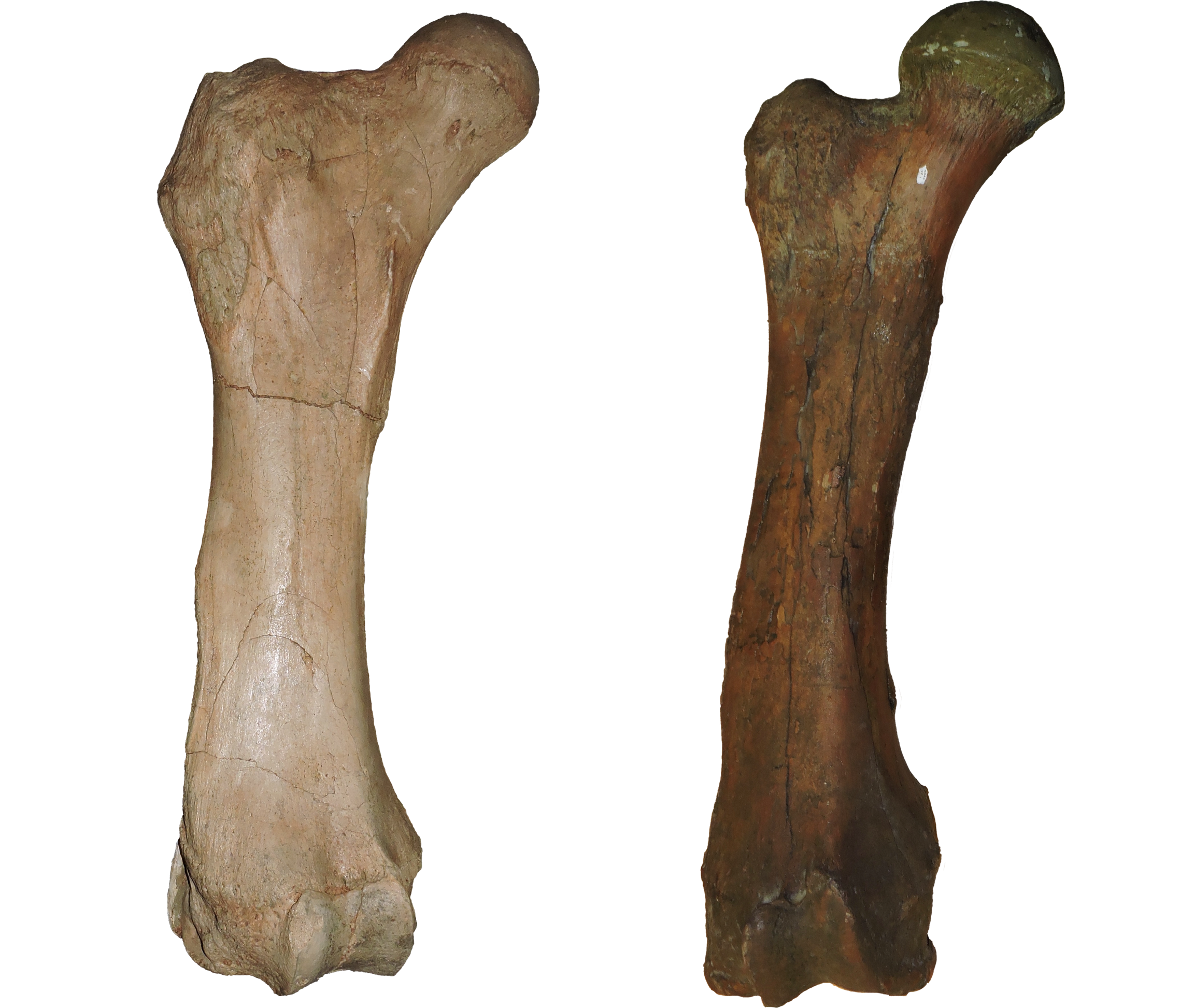 -- Mammut pacificus has no mandibular tusks, while they still occurred in about 25% of the M. americanum population. This is a tricky character, because both taxa seem to have been losing their chin tusks (the presence of chin tusks is the primitive condition for mastodons). But it seems that Pacific mastodons got there first. Below, at the top is Max's lower jaw, and below is a lower jaw from Colorado (from the Denver Museum of Nature and Science).Below is a map from our paper showing all the known Mammut pacificus localities, as well as the Mammut americanum localities we used in this study (there are many, many additional American mastodon sites we didn't examine):
-- Mammut pacificus has no mandibular tusks, while they still occurred in about 25% of the M. americanum population. This is a tricky character, because both taxa seem to have been losing their chin tusks (the presence of chin tusks is the primitive condition for mastodons). But it seems that Pacific mastodons got there first. Below, at the top is Max's lower jaw, and below is a lower jaw from Colorado (from the Denver Museum of Nature and Science).Below is a map from our paper showing all the known Mammut pacificus localities, as well as the Mammut americanum localities we used in this study (there are many, many additional American mastodon sites we didn't examine):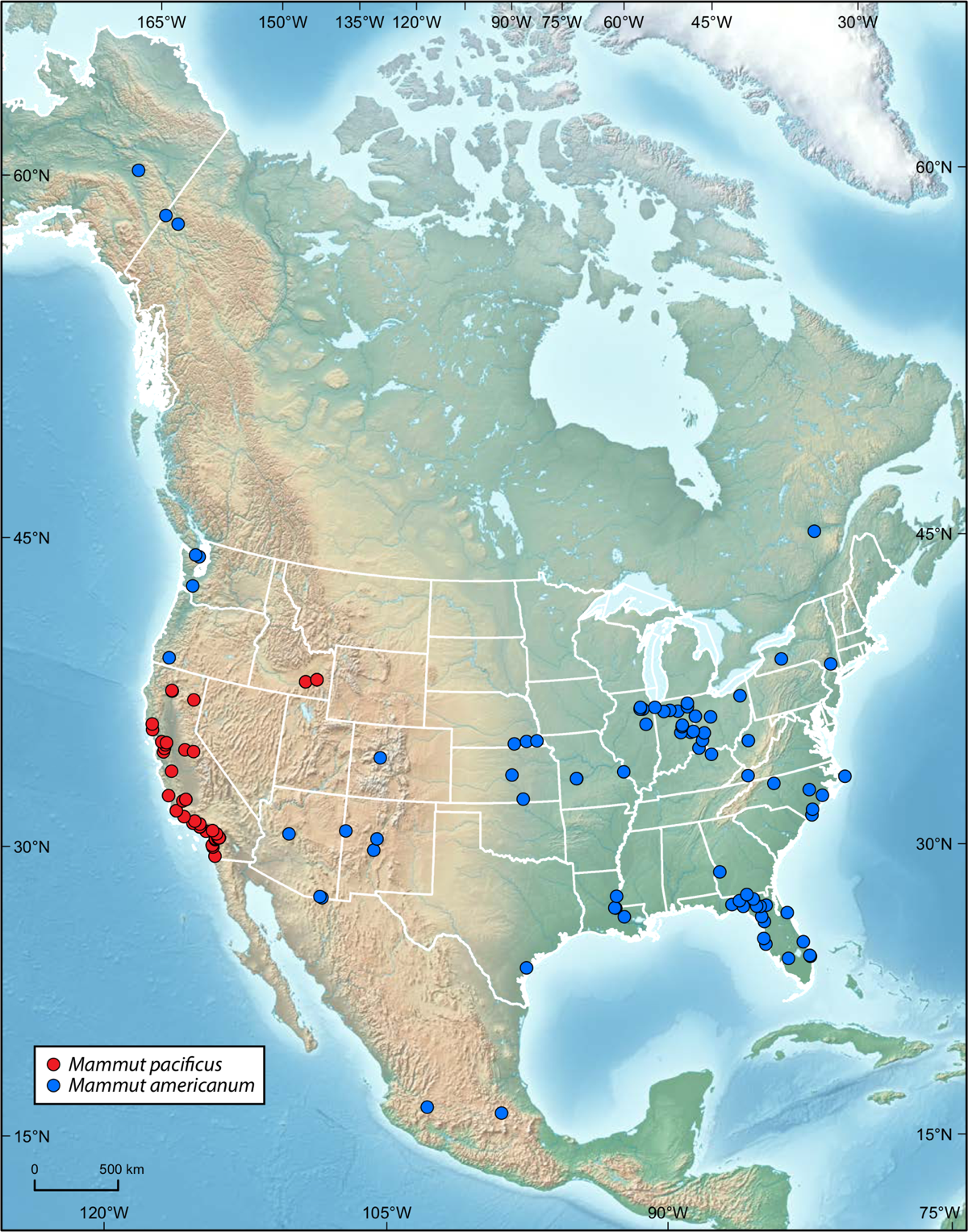 Note that, with the Oregon sample, we did not find any of the diagnostic bones (m3, femur, sacrum, lower jaw), so we conservatively coded the data as M. americanum, but it could actually be M. pacificus.We are committed to making our discovery as widely known as possible. To that end, we published our paper in the open access journal PeerJ, where it is available as a free download. We have also made 3D scans of 24 of the key DVL specimens available on MorphoSource and Sketchfab.I'll be writing more about the Pacific mastodon, but this is a quick summary of the highlights of the paper. If you really want to get into the details, our data is all available at the PeerJ link. Enjoy!
Note that, with the Oregon sample, we did not find any of the diagnostic bones (m3, femur, sacrum, lower jaw), so we conservatively coded the data as M. americanum, but it could actually be M. pacificus.We are committed to making our discovery as widely known as possible. To that end, we published our paper in the open access journal PeerJ, where it is available as a free download. We have also made 3D scans of 24 of the key DVL specimens available on MorphoSource and Sketchfab.I'll be writing more about the Pacific mastodon, but this is a quick summary of the highlights of the paper. If you really want to get into the details, our data is all available at the PeerJ link. Enjoy!
